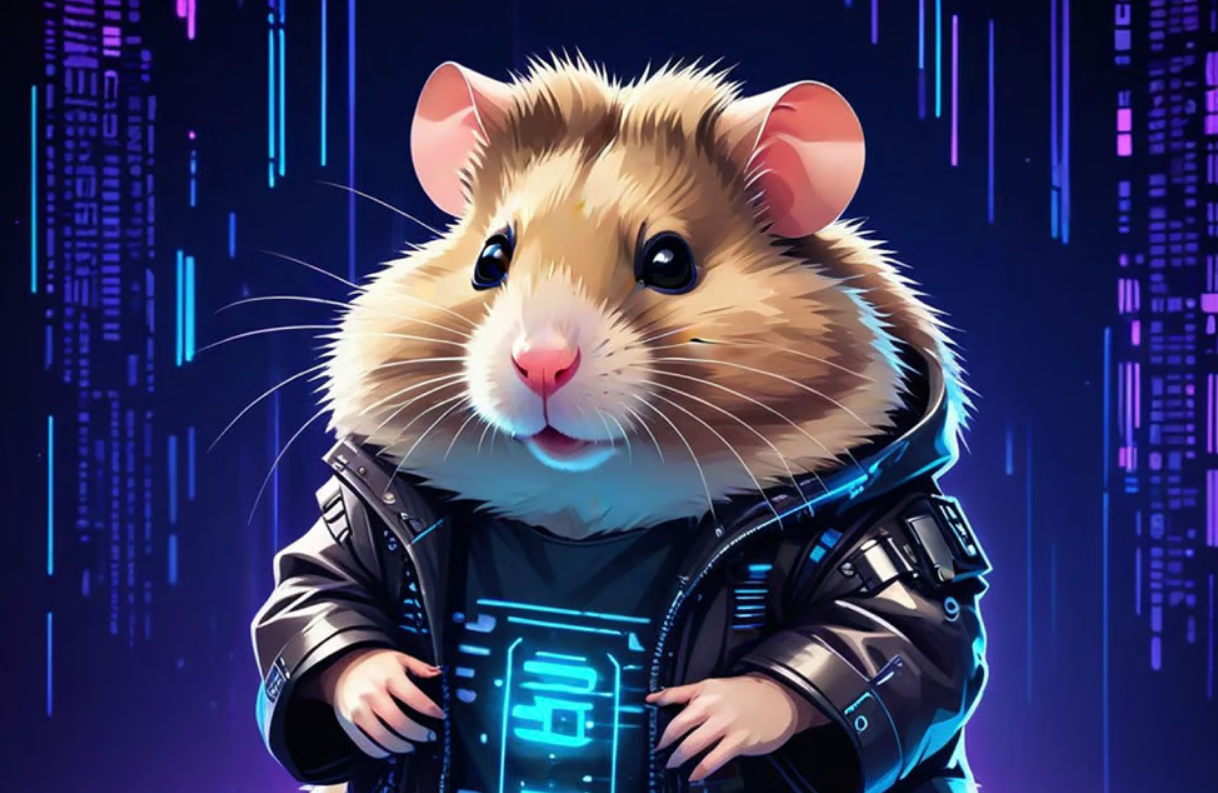Hamster Kombat particularly became viral for its SocialFi overlay, which rewards players for sharing the game with friends and joining connected channels. Notcoin (NOT) has announced a significant boost in passive income for its cardholders, doubling their revenue from the Notcoin card.
This change, aimed at making the project even more profitable for participants, will be implemented on May 21 at 14:00 UTC. The decision follows Notcoin’s impressive performance, where it accumulated a $1 billion Fully Diluted Valuation (FDV) after 35 million players engaged in its Telegram-based game from January to April.
This success story highlights the potent combination of utility, fun, and cryptocurrency on messaging platforms.The latest entrant to capitalize on this winning formula is Hamster Kombat. Nikita Anufriev, marketing advisor to the project, revealed that it was launched on March 25 and reached 1 million players within 11 days….Continue reading…
By: Anisha Pandey
Source: Notcoin to Double Cardholder Revenue amid Hamster Kombat’s Explosive Growth | Coinspeaker
.
Critics:
In 2017, in an attempt to monetize Telegram without advertising, the company began the development of a blockchain platform dubbed either “The Open Network” or “Telegram Open Network” (TON) and its native cryptocurrency “Gram”. The project was announced in mid-December 2017 and its 132-page technical paper became available in January 2018.
The codebase behind TON was developed by Pavel Durov’s brother Nikolai Durov, the core developer of Telegram’s MTProto protocol. In January 2018 a 23-page white paper and a detailed 132-page technical paper for TON blockchain became available. Durov planned to power TON with the existing Telegram user base, and turn it into the largest blockchain and a platform for apps and services akin to a decentralized WeChat, Google Play, and App Store.
Besides, the TON had the potential to become a decentralized alternative to Visa and MasterCard due to its ability to scale and support millions of transactions per second. In January and February 2018 the company ran a private sale of futures contracts for Grams, raising around $1.7 billion. No public offering took place.
The development of TON took place in a completely isolated manner, and the release was postponed several times.The test network was launched in January 2019. The launch of the TON main network was scheduled for 31 October. On October 30, the U.S. Securities and Exchange Commission obtained a temporary restrictive order to prevent the distribution of Grams to initial purchasers; the regulator considered the legal scheme employed by Telegram as an unregistered securities offering with initial buyers acting as underwriters.
The judge hearing the Telegram v. SEC case, P. Kevin Castel, ultimately agreed with the SEC’s argument and kept the restrictions on Gram distribution in force. The ban applied to non-U.S.-based purchasers as well, because Telegram could not prevent the re-sale of Grams to U.S. citizens on a secondary market, as the anonymity of users was one of the key features of TON.
Following that, Durov announced the end of Telegram’s active involvement with TON. On 26 June, the judge approved the settlement between Telegram and SEC. The company agreed to pay an $18.5 million penalty and return $1.22 billion to Gram purchasers.In March 2021, Telegram launched a bonds offering to cover the debt and fund further growth of the app.
Due to Telegram’s mixed nature as both a private communication method and a social media-like platform with mass groups and channels, along with its minimal restrictions on content with only calls to violence, illegal forms of pornography and scamming forbidden, the platform has been used by organizations and large groups for recruitment and spreading of their agenda.
Organized use of the app has been linked to pro-democracy protests in Belarus, Russia, & Hong Kong , as well as to the dissemination of state propaganda and violent rhetoric in oppressive regimes, the promotion of extremist views, and the digitalization of services provided by government entities and private businesses.
The app has been criticized by numerous research institutions and internet monitoring bodies due to violent organizations like ISIS, Proud Boys[249] and the Myanmar junta using the app to communicate, both privately between members and publicly through channel posts. While Telegram made substantial efforts to ban illegal content such as child abuse and pro-terrorist channels.
Such content is usually linked to Telegram allowing misinformation on the platform as, according to the founder,“conspiracy theories only strengthen each time their content is removed by moderators”. Telegram’s security model has received notable criticism by cryptography experts.
They criticized how, unless modified first, the default general security model stores all contacts, messages and media together with their decryption keys on its servers continuously; and that it does not enable end-to-end encryption for messages by default. Pavel Durov has argued that this is because it helps to avoid third-party unsecured backups, and to allow users to access messages and files from any device.
Criticisms were also aimed at Telegram’s use of a custom-designed encryption protocol. However, in December 2020, a study titled “Automated Symbolic Verification of Telegram’s MTProto 2.0” was published, confirming the security of the updated MTProto 2.0 and reviewing it while pointing out several theoretical vulnerabilities.
The paper provides “fully automated proof of the soundness of MTProto 2.0’s authentication, normal chat, end-to-end encrypted chat, and re-keying mechanisms with respect to several security properties, including authentication, integrity, confidentiality and perfect forward secrecy” and “proves the formal correctness of MTProto 2.0”. This partially addresses the concern about the lack of scrutiny while confirming the formal security of the protocol’s latest version.
The desktop clients (excluding the macOS client) do not feature options for end-to-end encrypted messages. When the user assigns a local password in the desktop application, data is locally encrypted also. Telegram has defended the lack of ubiquitous end-to-end encryption by claiming the online-backups that do not use client-side encryption are “the most secure solution currently possible”.
“Telegram introduces end-to-end encrypted video calls”. The Next Web. 14 August 2020. Archived from the original on 1 March 2021. Retrieved 29 March 2021.
Meta is copying Telegram channels in Instagram”. The Verge. Retrieved 17 October 2023.
Russia’s Zuckerberg launches Telegram, a new instant messenger service”. Reuters. Archived from the original on 28 January 2021. Retrieved 8 November 2020.
Meet Telegram, A Secure Messaging App From The Founders Of VK, Russia’s Largest Social Network”. TechCrunch. 28 October 2013. Archived from the original on 26 November 2015. Retrieved 8 November 2020.
Nobody can block it’: how the Telegram app fuels global protest”. The Guardian. 7 November 2020. Archived from the original on 7 November 2020. Retrieved 7 November 2020.
The Evolution of Telegram”. Telegram. Archived from the original on 26 January 2021. Retrieved 4 January 2021.
Most Popular Messaging Apps: Top Messaging Apps 2021″. respond.io. Retrieved 17 October 2023.
Cambodia: Govt officials favor Telegram to protect communications”. Tech Wire Asia. Retrieved 17 October 2023.
Telegram hits 900mn users and nears profitability as founder considers IPO”. http://www.ft.com. Retrieved 13 March 2024.
Telegram surpasses 1 billion downloads”. TechCrunch. Retrieved 17 October 2023.
“Durov Telegram”. Telegram. 8 February 2021. Archived from the original on 9 February 2021. Retrieved 10 February 2021.
Telegram Tops The List Of Most Downloaded Apps In The World For January 2021: Report”. Mashable India. 9 February 2021.




Leave a Reply